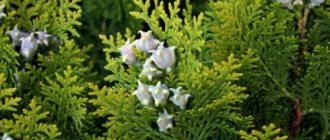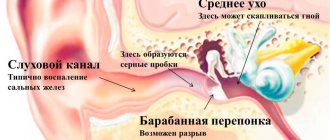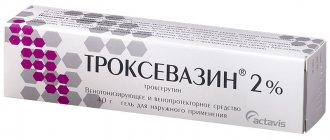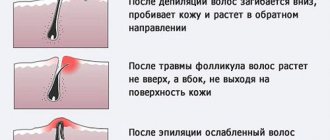What is vanilla
The name of the plant comes from the word vainilla, which means “pod” in Spanish. Externally, vanilla looks like a pod, but botanists say that the fruit is a capsule (type of fruit).
The oblong green sticks are the fruits of the vanilla tree. In another way they are also called vanilla beans. Over time, flowers bloom on the fruits. The snow-white, fragrant vanilla flowers are also dried and used. Therefore, not only the pods of the tree, but also the flower are vanilla.
The spice became known in Europe at the beginning of the 19th century, when Mexico was the main supplier and homeland of vanilla. In nature, vanilla grows in countries with tropical and subtropical climates. They mainly trade in spices:
The composition of the spice is determined by the following microelements:
Special substances in the composition of the plant’s flowers determine its pleasant aroma:
- essential oils;
- glucovanillin;
- vanillin;
- cinnamon ester.
The fruits of the tree have a sweetish, pleasant smell. But the spicy pods taste bitter, so vanilla is contained in small quantities in confectionery products.
Nutritional value is determined by percentage:
The calorie content of the spice is 287 kcal per 100 grams.
Watch an educational video about the spice:
Spice production
The vanilla growing business is considered a very profitable business, because the natural spice is quite expensive. Entrepreneurs maintain plantations of vanilla trees and supply spices in bulk to other countries for the production of spices and other goods.
The production itself includes 7 stages:
- Fruits are collected from trees.
- To disinfect and wash the pods from dirt, they are dipped in hot water (85 ° C).
- After the procedure, the fruits are left in water heated to 60 °C for a week, so that they ferment there, acquire a characteristic aroma and brown color.
- The spice is dried in the open air under the sun for several months.
- After a white coating (vanillin) appears, the spice is placed in a container and sent to a warehouse.
- The plant is packaged, packed, sent to retail outlets and production workshops.
- During production, the necessary substance is extracted from natural dried fruits, be it essence, vanillin or ground vanilla itself.
Video about how the spice is made:
Types and varieties
Vanilla is classified according to its origin:
- Bourbon or Madagascar is a high quality spice with a classic sweet aroma and some sourness.
- Mexican flat-leaf vanilla is drier than Bourbon vanilla, and the aroma contains unusual spicy notes of tobacco.
- Tahitian is a spice with a soft, sweet fragrance. Unlike others, it does not have a long sillage, but instantly reveals its aroma.
- Indian gives off creamy, caramel notes in the aroma.
- Indonesian is ideal for baking. It retains its scent even after prolonged heating.
Vanilla derivatives
Natural vanilla pods are used in the preparation of certain spices and essences:
- Essential oil is a special oil infused with flowers or mixed with vanilla essence. It is actively used in medicine and cosmetology.
- Vanilla sugar is sugar kept for a long time in a closed container with pods. Often used in baking and other confectionery products.
- Syrup – seeds ground with powdered sugar until smooth. Syrups are often used to soak cake layers.
- Milk is ordinary milk, boiled with spices, sugar and other additives.
- The extract is an alcoholic tincture from the pods. Finds application in perfumery.
- The essence is a very concentrated vanilla extract. Used in the manufacture of creams and oils.
Types and production of vanilla. Method of making spices
The high cost of the spice is due to the fact that it is difficult to cultivate. Natural vanilla is grown, pollinated, collected and processed only using manual labor. No technical devices or chemicals are used. The plant is grown on an industrial scale in the countries of South America and the Caribbean, China, Puerto Rico, Indonesia, India, and on the island of Madagascar.
Of the hundreds of plant species, the following varieties are suitable for producing spices:
- bourbon;
- Mexican;
- Tahitian.
The fruits are collected unripe. They do not have a specific smell that arises during long cooking.
The method for preparing the spice is as follows:
- French vanilla beans and other varieties are immersed in boiling water for 20 seconds.
- They are taken out and placed to dry and ferment. To do this, they are placed in a blanket and kept in sunlight for a week.
- The fruits are then dried in the shade for several months. They should be covered with a white coating of thin vanillin crystals. Thanks to it, the spice acquires its aroma.
- Ripe pods are sorted and taken to a warehouse, where they are packaged.
To obtain the powder, the pods are crushed, and the essence is produced in this way: the chopped fruits are infused in a special liquid.
natural vanilla has a multifaceted specific taste and aroma
Difference in smell between synthetic and natural vanilla
Synthetic spice began to be produced due to the high cost of natural pods. The difference in smell between natural and artificial spices is that in the first case the aroma is formed on the basis of 400 components. It turns out rich and multifaceted, unlike the smell of an artificial substitute.
Production of synthetic vanillin. Flavor identical to natural
Many people confuse vanilla and vanillin. Vanilla is a spice of natural origin, and vanillin is made from various raw materials using synthesis. The most common vanillin substrate is lignin, a by-product of the paper industry. In addition, synthetic vanillin is obtained from guaiacol, which is a product of dry distillation of wood.
Biosynthetic vanillin from bacteria is becoming popular. The raw material is ferulic acid, which is isolated from rice bran. The smell of vanilla of synthetic origin, as mentioned above, is slightly worse than that of a natural product.
Artificial spice is part of a group of flavorings identical to natural ones. This means that it has the same chemical structure as the natural one, so it can be used as a food product. A flavor identical to natural differs from artificial in that it is found in materials of plant and animal origin.
When purchasing vanilla beans, you should pay attention to their appearance and aroma
Beneficial properties of vanilla
Vanilla has a beneficial effect on a person’s mental and physical state:
- For women, the fruits of the vanilla tree give youth and beauty. They make the skin elastic and clean, improve the condition of hair and nails.
- The spice is believed to be a natural aphrodisiac. In men, it improves potency.
- Its use helps with muscle recovery and the treatment of anemia.
- The spice has a positive effect on a person’s mental and emotional state. Helps in the fight against insomnia, irritability and nervousness, relieves stress.
- Stimulates brain activity, increases performance.
- Provokes the production of serotonin – the hormone of happiness. Improves mood, puts you in a positive mood.
- Vanilla oils are actively used in aromatherapy. Their smell has a positive effect on the general condition of the body. The aroma relaxes, relieves tension in the body, gives a feeling of peace and comfort.
Interesting about the benefits of spice in the video:
Application of vanilla
Vanilla is actively used as a spice in cooking. It is added to confectionery and baked goods.
The beneficial properties of natural vanilla are often used in other industries:
In cooking
To use the pod for its intended purpose, you need to know some features:
- To begin, place the stick on a clean surface with the curved end facing up.
- Make a cut along the pod without dividing the fruit into parts.
- Open the edges of the pod for convenience.
- Using a knife, carefully scrape out the seeds inside the pod.
- Use vanilla seeds in a recipe.
Watch the video on how to split the pod:
Recommended spice dosage:
- 1/20 sticks per 1 serving;
- 1/4 sticks per 1 kg of product.
If you add too much spice, the food will taste bitter.
The spicy aroma will perfectly complement the taste of the following dishes:
- milk, cream, chocolate;
- seafood sauces;
- hot drinks (coffee, cocoa, tea);
- candies;
- baked goods, cakes, pastries;
- ice cream;
- cocktails;
- fruit desserts;
- curd cheeses;
- Indian style vegetable curries.
In order for the spice to give off a scent and leave behind a pleasant trail, you need to follow some rules when adding it to the product:
- It is better to add spice to cold dishes at the final stages of cooking.
- In products undergoing heat treatment, it is most often added before being sent to heat. The exceptions are souffles and mousses.
Read more about using vanilla in cooking:
- For products that require a long stay in the oven, vanilla is added at the last stage of kneading the dough.
- When kneading the dough for shallow, quick baking, beat the spice with butter or egg.
- In meat dishes and spicy sauces, the pod is completely immersed 15 minutes before the end of cooking, and removed afterwards.
- In desserts such as creams, ice cream, and puddings, spice is added at the end.
How to store spice
Under no circumstances should the pods be placed in the refrigerator (they will simply dry out there).
Properly fermented fruits in sealed packaging retain aromatic substances for decades. The spice is stored in an airtight glass container, in a dark place, at room temperature or in moderate cold (pantry). In the refrigerator, the spice will dry out quickly, and you will not be able to extract the seeds from the fruit.
Selection and storage of spices
To choose a high-quality spice with a rich aroma, pay attention to some nuances:
- The stick is oily and plastic to the touch.
- Rich color from dark brown to black. There should be a bright, characteristic odor.
- Brittle, dry, cracked, light-colored sticks should not be taken. Most likely, due to improper storage they have lost their beneficial properties.
To ensure that the pods retain their pleasant aroma for a long time, keep the sticks in a dark, cool place in a hermetically sealed jar.
What to do with the pods after removing the seeds
After the seeds have been extracted, the leaves of used vanilla, the dried pods that fall apart in the hands, are put into processing to preserve the remaining essential oils.
Vanilla sugar
Sugar is flavored with vanilla raw materials in a hermetically sealed container. To do this, put 1 vanilla shell in sugar (1 pod per 0.5 kg of granulated sugar) and leave for 2 weeks, shaking occasionally. Sugar crystals absorb and retain volatile substances well.
After this, the flavored sweetness can be added to the dish according to the recipe (required proportion of vanilla sugar).
Essence
Unused vanilla remains and dry pods are poured with vodka, cognac or rum. On average, 2 to 4 fruits are added per 500 ml of alcohol. Infuse the essence in a dark place for a month; if vodka is used as a base, it should be infused for up to 3 months.
The containers are shaken periodically. You can infuse vanilla extract longer, the aroma will be more intense, and you only need a few drops to prepare the dish.
Vanilla powder
To flavor hot drinks, the pods are dried (just put them in the open air), then ground in a blender or coffee grinder. A pinch of powder will give your coffee or tea a rich vanilla aroma.
Vanilla powder
For 500 g of granulated sugar, just add 1 dried (or prematurely dried) pod and grind to the consistency of powder in a coffee grinder. If you overdo it with vanilla, the powder will turn out bitter, so you should not add more than 1 fruit.
Vanilla coffee
If, when grinding coffee, you add the dry shell of the pod in the proportion of ½ vanilla per 500 g of beans, you will get coffee powder with a pleasant aroma.
How to grow vanilla
You can grow vanilla at home only in warm climates, because it is a tree. Find a warm, well-lit, draft-free area. The plant grows in a humid environment. It needs to be watered 1-2 times a day, and sprayed at least 5 times.
Watch the video to see how vanilla is grown and harvested:
Vanilla is a plant with sweet-smelling, healthy fruits. In the vanilla growing business, people have previously made huge profits, delighting consumers with high-quality, valuable goods. The exotic spice is considered expensive and irreplaceable in its physical and healing properties.
Do you often use natural vanilla bean in baking and other areas of your life? Share your experience in the comments, repost on social networks.
Vanilla
The aroma of vanilla is familiar to many from childhood! This sweetish-spicy smell attracts us to bakeries and pastry shops. And you can’t count how often housewives use this spice in home cooking! It's rare that a person doesn't like the scent of vanilla. This is a truly “delicious” additive that makes dessert dishes and baked goods so attractive that it is simply impossible to resist. Many people are probably interested in what vanilla is, how this spice grows, whether it benefits the human body, and whether there is any harm from consuming the spice. Let’s try to figure it out and “examine” vanilla from different angles!
What does vanilla look like and where does it grow?
The most common type of vanilla is a powdery suspension of snow-white color. In this form, this food flavoring additive is most often sold in grocery stores. Another option is dark vanilla seeds, a food flavoring extracted from the pods of the plant in its natural form. Also in the confectionery department you can find liquid vanilla extract, which is sold in small glass bottles. Literally one drop of this product is enough to saturate baked goods, creamy desserts or other types of confectionery with a wonderful aroma. However, we have described the types of vanilla in which the additive appears to us already in stores. But almost everyone knows that vanilla is a product of plant origin. But not everyone knows what the plant itself looks like!
How vanilla grows
Vanilla is a plant that belongs to the orchid family. This is a vine with leguminous fruits. When fresh, vanilla pods have a juicy green (at the beginning of growth) color. They reach 20 centimeters in length. Ripe pods of the plant are processed. They are dried, crushed or the seeds are extracted. The plant is holly. The leaves are waxy bright green. Depending on the variety, vanilla blooms with beautiful white, beige or pale yellowish flowers. It is noteworthy that vanilla flowers are suitable for pollination for only 1–2 days. And the fragrant vanilla fruits appear only on a pollinated plant. In nature, orchid bees pollinate the plant. In production, pollination is carried out “manually”. The ripening time of plant pods is from 8 to 9 months. The closer to maturity, the darker the pods become. They reach a dark gray, brownish hue. Inside the pods there are small dark seeds. Higher grades of vanilla are characterized by the presence of a white coating on the surface of the pods. This is the same vanillin that exudes an incredibly “delicious” aroma, which today is commonly identified with fresh, delicious pastries and desserts.
Vanilla appearance. Description of vanilla flower. Where it grows. Types and varieties of vanilla
This is a perennial vine of the Orchid family. There are about 100 species of this plant found in nature. This is the only type of orchid that bears fruit. The stem of such a vine is covered with a large number of fleshy leaves that have an ovoid, oblong or elliptical shape. Vanilla flowers are large in size, yellow-green in color, about 6 cm in diameter; They give off a pleasant aroma. The plant blooms at the end of May.
The main advantage of the spice is its fruit. They are presented in the form of single-chamber green boxes, which contain a large number of small brown seeds inside. The pods grow up to 30 cm in length.
vanilla is an epiphytic vine with aerial roots
Many people are interested in how vanilla grows. This epiphytic vine can only grow if there is another plant nearby. It is extremely fragile, so it rests on something stronger. It can reach a height of 20 m. This plant has aerial roots, thanks to which it clings to branches and tree trunks.
Having figured out how a spice grows in nature, you should know where it grows. It is found in countries such as Mexico, Paraguay, Brazil, and on the tropical islands of Ceylon, Mauritius, and Java. The plant prefers tropical rainforests, where the soil is loose and contains a large amount of organic matter.
Types of vanilla grown for sale:
- Flat-leaved or fragrant. The variety of this plant is characterized by the best qualities. This spice has long, oily pods and a fresh aroma. It is grown in Indonesia and Madagascar.
- Tahitian. This variety has a floral aroma with notes of fruit and tobacco. The spice is used in perfume production and cooking.
- Guadalupe. This variety is of lower quality than others. It is used to flavor tobacco products and is also added to various perfumes.
Vanilla flatleaf is divided into several commercial varieties:
- Madagascar or Bourbon. Has a slightly sour aroma. It is recommended to add it to dishes that require a subtle note of this spice.
- Mexican. The smell of the spice in this case is sweet, with a slight tobacco tint.
- Indian. Characterized by a classic aroma.
- Indonesian. This type of plant has a rich woody smell that does not disappear even after heat treatment.
Vanilla fruits contain a large amount of substances beneficial to humans.
Chemical composition
Vanilla has the following chemical composition:
- proteins;
- fats;
- carbohydrates;
- vitamins B1, B2, B3, B5, B6;
- macro- and microelements: zinc, sodium, potassium, phosphorus, magnesium, iron, calcium, manganese, copper, zinc;
- cinnamon ether;
- glucovanillin;
- resins and essential oils;
- tannins;
- tannins;
- vanillin;
- alcohols (pentanol and undecanol);
- organic acids - acetic, salicylic, benzoic;
- aromatic substances.
The vanilla smell is explained by the content of heliotropin and other components of essential oils.
Nutritional value and calorie content
Once you know what vanilla looks like, you should know its nutritional value. 100 g of product contains:
- proteins - 1.2 g;
- fats - 0.1 g;
- carbohydrates - 12.7 g.
The calorie content of the spice is 288 kcal per 100 g.
Due to its rich chemical composition, vanilla has a wide range of medicinal effects
general description
The liana can rise to a height of up to 15 m, entwining any tree. Its trunk is quite thin and practically does not give off branches. The fleshy leaves of the plant have a characteristic appearance: long, flat, oval in shape with a pointed apex. They form directly on the stem between the nodes. The leaves are attached to the bark of the host tree by shoots growing from the back of the leaf.
Inflorescences are formed on shortened stalks coming from the axils of the leaves. Each cluster is formed from 15 flowers with 6 petals, in one of which, wrapped in a tube, the pistil and stamen are hidden. The petals are greenish-yellow and have white tops. The inflorescences emit quite pungent aromas. Vanilla flowers bloom in the third year of the plant's life and bloom for only one day.
The vine has big problems with pollination. Under natural conditions, it is pollinated by only one species of hummingbird and bees of the genus Melipona, which live only in Mexico. On plantations, flowers are pollinated by hand with a special brush, but with this technology, only 50% of flowers produce an ovary.
Despite the fact that vanilla itself grows quickly - up to one meter per month, the ovary is formed only after 7-9 months from the moment of fertilization. In place of the flower, a green vanilla fruit is formed. Narrow oblong cylinders grow up to 25 cm in length and 1.5 cm in width. Inside the pods there is a pulp where vanilla seeds rest, which look like many black grains. The yellow color of the fruit indicates that it is time to harvest. Interestingly, they were once used both as medicine and as money.
Officially, 103 species of plants are known, most of them are decorative. To obtain the spice, only three types of vanilla are bred:
- Vanilla planifolia – flat-leaved. This is the most common type of plant, since the highest quality spice is obtained from its fruits up to 25 cm long;
- Vanilla tahitensis – Tahitian. Its red-brown pods have an exotic floral scent, enriched with notes of fruit with a subtle hint of tobacco. They contain less vanillin, which is why their fruits are cheaper. This type is used by confectioners to make sweets, ice cream and creams, and perfumers to create compositions with sweet notes;
- Vanilla pompona - Guadalupe - is native to Central and South America. The product obtained from its pods is valued even less. The smell of Guadeloupe vanilla is similar to that of Tahitian vanilla. Vanilla pompona is used only in perfumery and in the production of flavored tobacco.
Possible harm
The vanilla plant is a spice with an intoxicating, persistent aroma. Its excessive consumption leads to an allergic reaction.
Abuse of natural spices, due to the high cost of the product, is almost impossible. Its substitutes, including vanillin, are dangerous: they contain carcinogens and petroleum derivatives.
Vanilla extract contains synthetic aldehydes. The aroma of synthetic powder is persistent and corrosive.
Doctors do not recommend staying in a room with this smell for a long time, otherwise there is a risk of severe headaches or dizziness.











